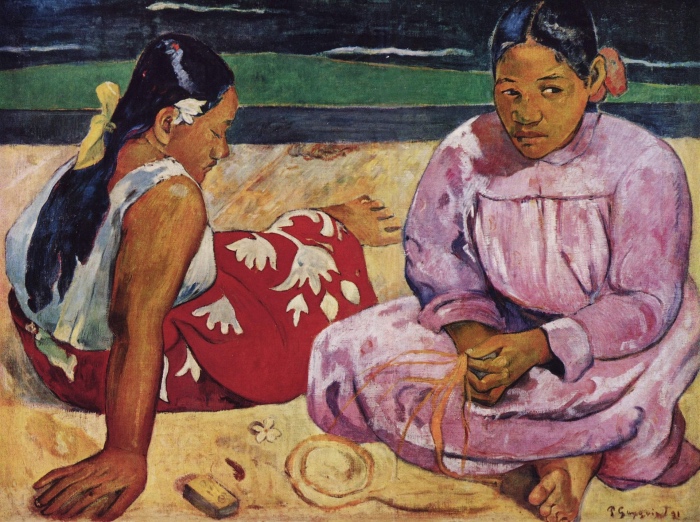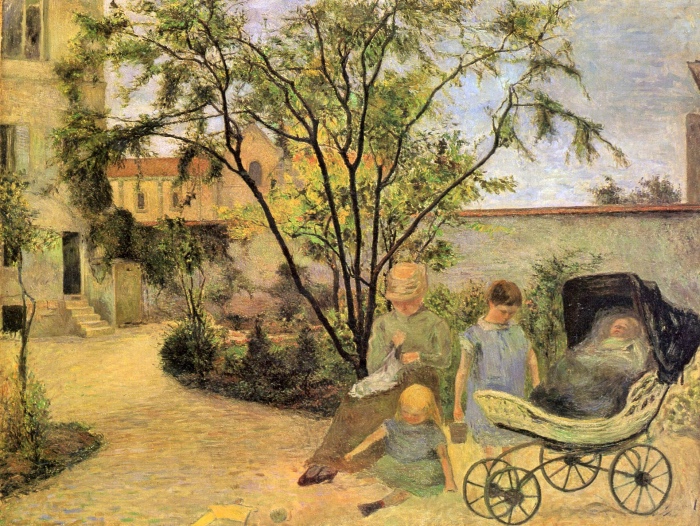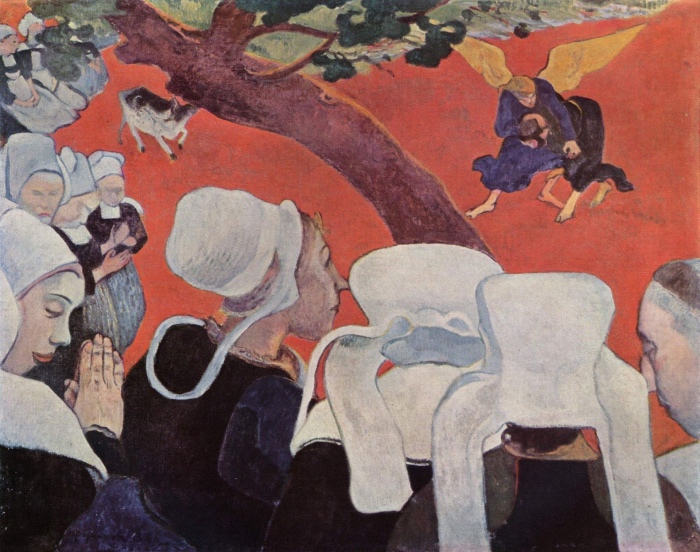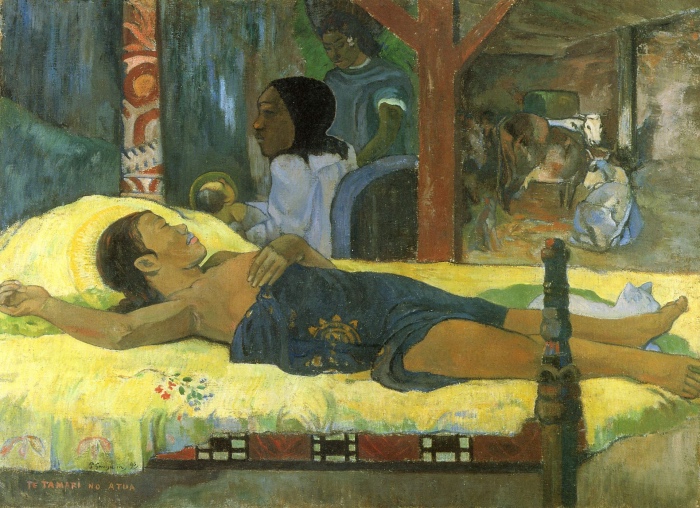Paul Gauguin: 5 things to know

Paul Gauguin, donne tahitiane (1891). museo d’Orsay di Parigi
PAUL GAUGUIN: 5 THINGS TO KNOW
Paul Gauguin is the most restless and nonconformist European artist who lived at the end of the 19th century.
Looking at his paintings portraying exotic landscapes and beautiful women you can feel the calm of a place far away from France, where Gauguin had lived for a long time but where he couldn’t find peace.
Gauguin arrived in Polynesia driven by the restlessness which had always pushed him to look for something.
His life was an adventure since his childhood and was characterized by travelling.
In this post you’ll find 5 things to know about the life and the works of Paul Gauguin.
1 – PAUL GAUGUIN IN PERU’
Paul Gauguin was born in Paris in 1848, but he spent his early childhood in Lima, Perù, where his family had moved, and where his maternal grandfather, don Mario Tristan y Moscoso lived.
Gauguin’s father died during the journey to Peru, but Gauguin’s stay in Lima would be one of the happiest periods of his life.
2 – WHAT INFLUENCED PAUL GAUGUIN
Gauguin returned to France together with his mother in 1855, and at the age of 17 he joined the French navy, and began travelling, until in 1871 he settled down in Paris and began working as a stockbroker.
In 1873 he married Mette Sophie Gad, a Danish girl, who would give him 5 children. In this period Gauguin began painting and met the Impressionist painters.
The painting Garden in Vaugirard (Painter’s Family in the Garden in Rue Carcel) (1881) dates back to this period.

Paul Gauguin, La famiglia del pittore nel giardino (1881). Ny Carlsberg Glyptotek, Copenaghen.
3 – PAUL GAUGUIN AND THE IMPRESSIONISM
Paul Gauguin made friends with Camille Pissarro, and from 1879 to 1886 he took part in the last five Impressionist art exhibitions.
Until 1886 his life was quiet and comfortable, but after the Paris Bourse crash of 1882 Gauguin lost his job and got himself into financial and family troubles.
His marriage fell apart and he didn’t see his children for a long time, and at the same time he began leading a life more and more eccentric.
Gauguin left Paris and went to Brittany, then to Tahiti and eventually to the Marquesas Islands.
4 – PAUL GAUGUIN AND VAN GOGH
Paul Gauguin spent some time in Port-Aven, where he met several painters who were experimenting new techniques, and he painted Vision After the Sermon, 1888.
He met the Van Gogh brothers, Vincent and Theo, and Gauguin would decide to spend some weeks in Arles together with Vincent Van Gogh.
But on December 23rd 1888 the situation took a turn for the worst, and after a furious brawl Van Gogh cut off his left ear with a razor. Then, Gauguin left Arles and decided to leave for the Islands of the Pacific Ocean, while Van Gogh was admitted to an asylum where he would paint his masterpiece “The Starry Night”.

Paul Gauguin, Visione dopo il sermone (1888). Scottish National Gallery, Edimburgo
5 – PAUL GAUGUIN AND TAHITI
Paul Gauguin spent the rest of his life in Polynesia.
The culture of the Pacific Ocean, the colours, the scents, the women so different from the French ones fascinated him.
Gauguin’s paintings, starting from Impressionism became more expressive and colours became bold and intense, but moreover the paintings became enriched by spirituality.
His source of inspiration were medieval Gothic glass windows he knew so well, but combined with a more primordial dimension.
Gauguin also became an anti colonialist fighting the French who ruled the island.
For this reason, he died in prison on the island of Hiva Oa in 1903.
Paul Gauguin painted a lot of extraordinary canvases in Polynesia, but maybe the most famous and the most beautiful is The Birth of Christ (1896).

Paul Gauguin, La nascita di Cristo, figlio di Dio (1896). Neue Pinakothek, Monaco di Baviera
Follow me on:
About me
In this blog, I don't explain the history of art — I tell the stories that art itself tells.


